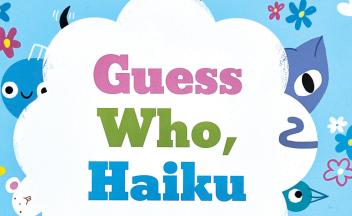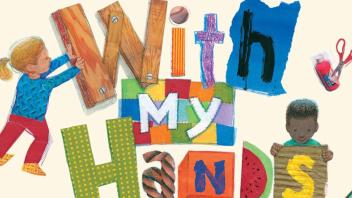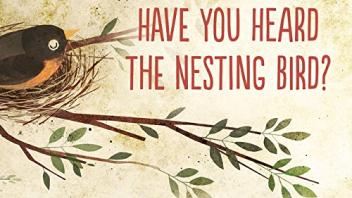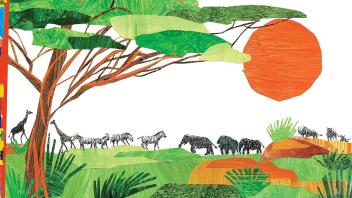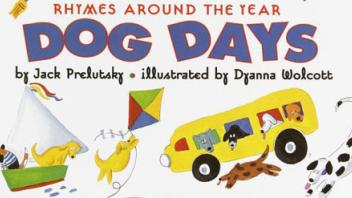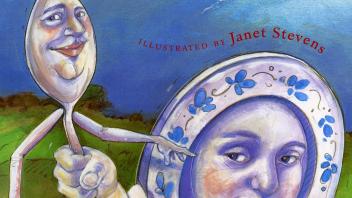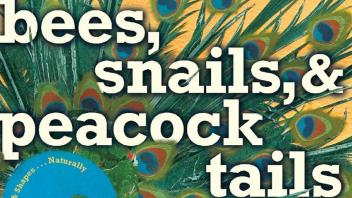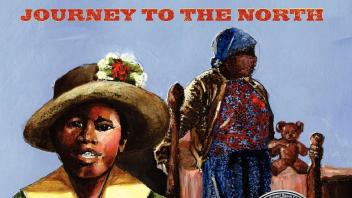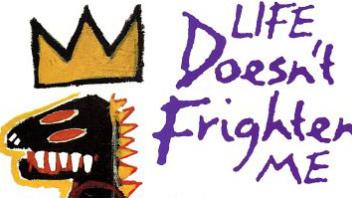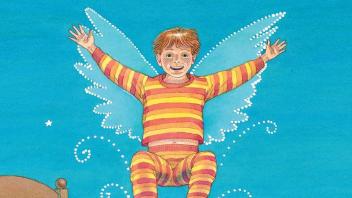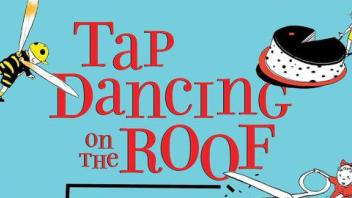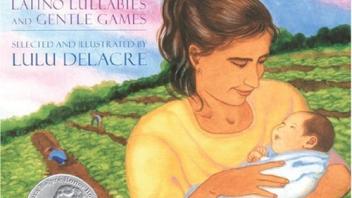Learning through poetry
- Poetry for Children
A blog about finding and sharing poetry with young people, from Sylvia Vardell — professor and author of Poetry Aloud Here and The Poetry Friday Anthology for Celebrations. New! Watch our video interview with Sylvia Vardell. - Let’s talk about poetry with Lee Bennett Hopkins
Meet Lee Bennett Hopkins, a prolific poet and anthologist of poetry for children, in this interview with our children’s literature expert, Maria Salvadore. - The P Word
A personal journey in discovering how to connect with poetry, from children’s literature expert and blogger Rachael Walker - Literature-based teaching in science: poetry walks
Read and discuss poetry with nature imagery with students. Take students on a poetry walk around the school, neighborhood, or community to observe and collect sensory images from direct experience with nature: the sights, sounds, smells, and textures of things outdoors. Students can take a poetry journal with them to write down words as they observe, listen, smell, and touch things outside the classroom. - 10 ways to use poetry in your classroom
From activating prior knowledge to exploring language to capturing character, discover ten ways to integrate poetry into your language, reading, and writing lessons. - Janet Wong’s poetry suitcase
Children’s author Janet Wong tells you how to pack a poetry suitcase — and get more poetry into your classrooms. - Writing poetry: sijo, cinquain, haiku, and rhymes
Valentine’s Day — or National Poetry Month — is a great time to practice poetry writing skills and experiment with a new form. There are lots of different kinds of poetry forms, including rhyming poems, limericks, free verse, cinquain, haiku, and sijo. - Using poetry to teach reading
Children are naturally drawn to humor, rhyme, and rhythm, and these are all found in poetry. Find out how to use poetry to motivate kids to read and as a tool to build fluency, vocabulary, and comprehension skills. - Nursery Rhymes: Not Just for Babies!
There’s a reason we learn nursery rhymes as young children. They help us develop an ear for our language. Rhyme and rhythm highlight the sounds and syllables in words. And understanding sounds and syllables helps kids learn to read! - Poems at Home
Sharing poetry with kids is a great way to highlight language. Poems offer humor, interesting words, tongue twisters, alliteration, and opportunities for choral reading (reading together). Find out how to plan a lively and fun family poetry jam! - Start with a Book: Poetry
Poetry books, hands on activities and crafts, parent tips, great poetry websites for kids, poetry apps, and more. - Introducing and reading poetry with English language learners
Poetry is so versatile, which makes it a great form to use in the ELL classroom. Poems can be used to introduce or practice new vocabulary, language structures, and rhyming devices. In addition, many ELLs come from cultural backgrounds rich with poetry and folktales. - Writing poetry with English language learners
Writing poetry is a great exercise for English language learners. It gives them a chance to experiment with language and vocabulary, and to freely share their ideas without the confinement of perfect grammar or firm structures.
Children’s poets on using poetry across the curriculum
Resources from other organizations
- Hopi Poetry Lesson Plan (NEH EDSITEment)
In this lesson, students carefully examine literal and figurative language used in Hopi poetry to underscore the importance of place and corn to the Hopi culture. Examples are drawn from Hopi poet, Ramson Lomatewama, whose poetry celebrates his presence on the landscape, highlighting the things he sees, hears, feels, and experiences while working, walking, or simply standing still outside. These Hopi poems describe an intimate and personal interaction between the poet and the environment. - Lesson plans, afterschool and parent resources, and more (ReadWriteThink )
ReadWriteThink has a rich collection of classroom and at-home resources, including activities that introduce different forms of poetry and an online ‘word mover’ interactive tool. - Using primary sources to create found poetry (Library of Congress)
The Found Poetry Primary Source set supports students in honing their reading and historical comprehension skills by creating poetry based upon informational text and images — on topics as diverse as Helen Keller, Walt Whitman, women’s suffrage, and the Harlem Renaissance. A Teacher’s Guide is included. - Poetry 180 (Library of Congress)
Poetry 180 is designed to make it easy for students to hear or read a poem on each of the 180 days of the school year. The poems (primarily for high school students) are intended to be listened to, and all members of the school community can be included as readers. A great time for the readings would be following the end of daily announcements over the public address system. - Poetry lesson plans (Academy of American Poets)
Browse these lesson plans, most of which align with Common Core State Standards, with an eye toward developing skills of perception and imagination. You’ll also find a poetry glossary . - African American poetry (Poetry Foundation)
In partnership with James Madison University, Dr. Maya Angelou, and the Target Corporation, the Poetry Foundation has developed curriculum for teaching essential African American poetry to students of all ages. - Poetry at home (Poetry Foundation)
“Learning to experience poetry does not require lectures or dissection.” Children’s literature blogger Susan Thomsen provides a helpful guide for how to get your kids reading and enjoying poetry. - Children’s Poetry Archive
Poetry doesn’t just live in books — it lives in the sound of the words and the voice of the poet. When poets read aloud, they breathe life into the poems. The Children’s Poetry Archive is a place where everyone can listen to poetry. Listen to Roald Dahl, Allan Ahlberg, Langston Hughes, and other poets read their work.
Poetry books for kids
Themed Booklist
More Than Rhymes
Themed Booklist
Celebrating Poetry and Nature
Themed Booklist
Poems for All!
Themed Booklist
A Packsack of Poems
Themed Booklist
Poetry for All Ages
Themed Booklist
Nursery Rhymes
Themed Booklist
A Poetic Spring
Themed Booklist
Poems Don’t Have to Rhyme
Themed Booklist
Celebrating the Poet and Author Maya Angelou
Themed Booklist
Lee Bennett Hopkins: Poetry Collections
Themed Booklist
Asian Pacific American Poetry, Haiku, and Sijo
Themed Booklist
Hispanic Poetry, Nursery Rhymes, and Songs
Book Finder
To find even more great poetry for children, visit our Book Finder tool, and select “poetry” in the genre listing, then filter by age, topics, and regions of the world.
More booklists
- Poetry Anthologies by Sylvia Vardell
- Summer Reading: Poetry
- Poems for Everyone (Colorín Colorado)
NCTE Award for Excellence in Poetry for Children
The National Council of Teachers of English selects presents the Award for Excellence in Poetry for Children to “honor a living American poet for his or her aggregate work for children ages 3–13.” A collection of poetry books from all the winners of the NCTE Award for Excellence in Poetry for Children is sustained and preserved at the University of Minnesota Children’s Literature Research Collections (CLRC ) / Kerlan Collection at the Andersen Library.
Video interviews with children’s poets
Poets on poetry
Listen in as acclaimed children’s writers like Janet Wong, Marilyn Singer, Kwame Alexander, Ashley Bryan, Jack Prelutsky, Mary Ann Hoberman, and J. Patrick Lewis talk about reading poetry aloud and writing poetry.
From our Meet the Authors video series
National Poetry Month resources
National Poetry Month is a month-long, national celebration of poetry established by the Academy of American Poets . The core mission is simple: to celebrate poetry in all its forms and to bring more public visibility to the art of poetry, to living poets, to our complex poetic heritage, and to the literature of poetry. Here are 30 ways to celebrate National Poetry Month .
- Dear Poet
This multimedia education project invites young people in grades five through twelve to write letters in response to poems written and read by some of the award-winning poets who serve on the Academy of American Poets board. Teachers — if you are interested in using Dear Poet in the classroom, take a look at these Common Core-aligned lesson plans . - Teach This Poem
Produced for K-12 educators, Teach This Poem features one poem a week from our online poetry collection, accompanied by interdisciplinary resources and activities designed to help teachers quickly and easily bring poetry into the classroom. Sign up to receive your weekly poem! - Poem in Your Pocket Day
The idea is simple: select a poem you love during National Poetry Month then carry it with you to share with classmates, family, and friends on a selected day in April. You can also share your poem selection on Twitter by using the hashtag #pocketpoem. - 30 Poets/30 Days
The GottaBook blog hosts an annual 30 Poets/30 Days project. Each day in April, you’ll find a brand new poem from top children’s poets. - The Miss Rumphius Effect
The Miss Rumphius Effect blog features interviews with children’s poets, poetry writing prompts, and lots of great poetry book lists sorted by theme.
More poetry activities
- How to make a “Poetree”
Write a poem or find a favorite one, then hang your poem from a community tree or branches you’ve brought indoors. A great way to share poems and bring awareness to the beauty of poetry! - The Poetry Foundation
Find a poem, ways to use poetry in the classroom and at home, learning about our poet laureates, podcasts, blogs, and much more. - River of Words
A project that connects kids to their local environment and their imaginations through poetry and art. - Favorite Poem Project
Dedicated to celebrating and documenting poetry’s role in Americans’ lives, here you can watch or listen to people read poems that they love. - Magnetic Poetry
Kids can create virtual magnetic poems and read verse from their peers. - Shel Silverstein
Visit this playful interactive website from the beloved poet. Games, puzzles, printables, e-cards, and ideas for parents and teachers. - Jack Prelutsky
If you love Children’s Poet Laureate Jack Prelutsky and his inventive wordplay, you’ll love this site.
